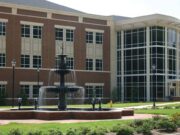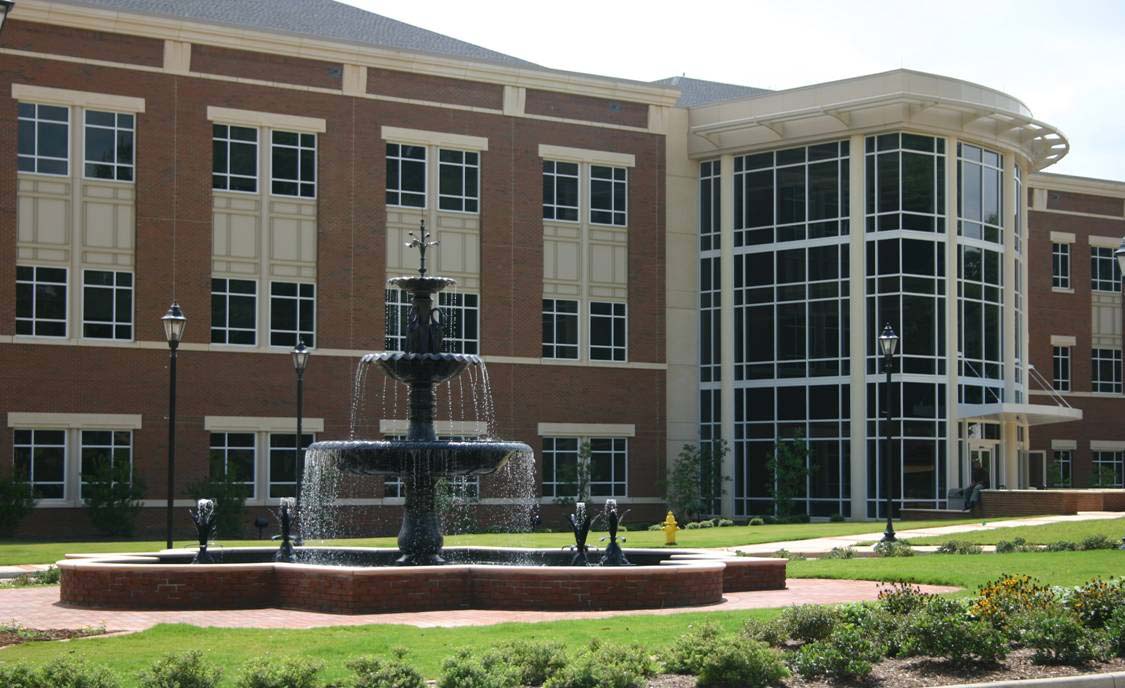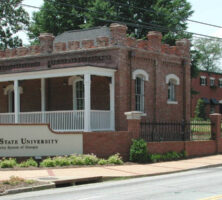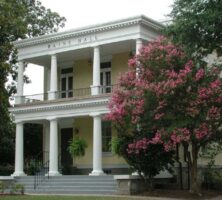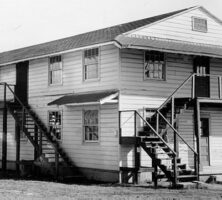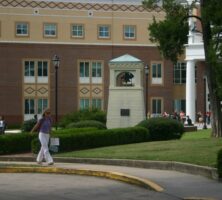Note from the Editors: In January 2013 Augusta State University merged with Georgia Health Sciences University to form Georgia Regents University (later Augusta University). This article chronicles the history of Augusta State University from its founding until the time of the merger.
Augusta State University (ASU) in Augusta, a unit of the University System of Georgia, offers undergraduate- and graduate-degree programs in the liberal arts, the sciences, education, and business. The institution’s roots go back to the late 1700s, and its history has been marked by multiple names, levels, and locations.
Richmond Academy
The university dates its formal beginning to 1925, when the Junior College of Augusta (JCA) was created from the Academy of Richm/ond County (ARC). The academy, established by the state legislature as a college-preparatory school for boys, opened in 1785, the same year that the legislature authorized a university system to be made up of public academies and a capstone college. The only unit of the system in existence at that time and for several years following was ARC. In 1787 Connecticut native Abraham Baldwin—
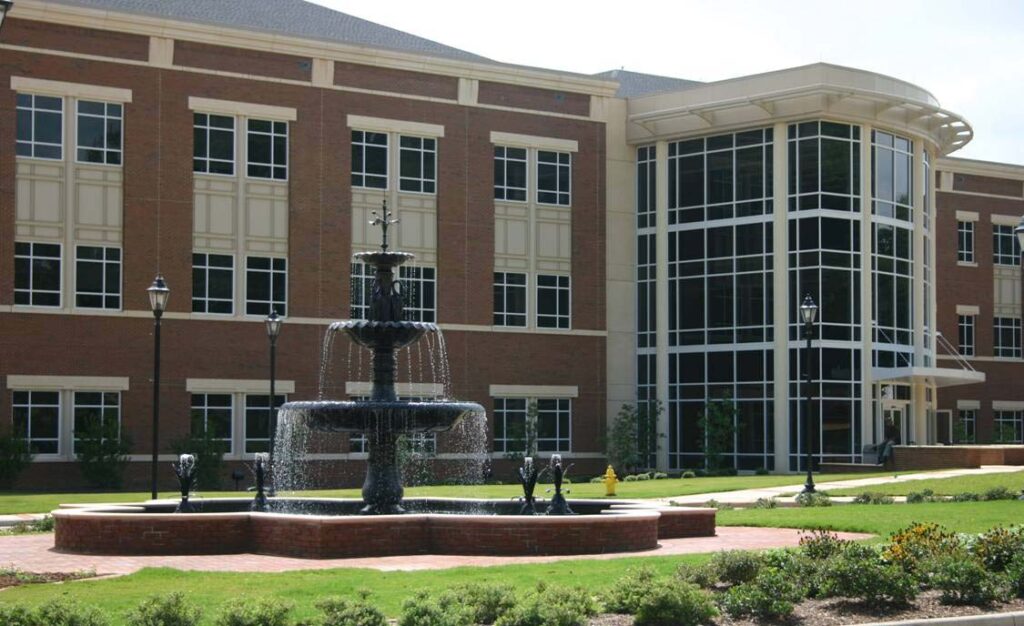
Courtesy of Augusta State University
a signer of the United States Constitution, “father of the University of Georgia,” and ARC trustee—wrote to a friend in his home state that there were fifteen students at the academy engaged in course work comparable to that at Yale University in New Haven, Connecticut. In 1791 U.S. president George Washington visited ARC and listened to student examinations. He later authorized the establishment in Augusta of a federal arsenal, which was built on the site occupied today by Augusta State University.
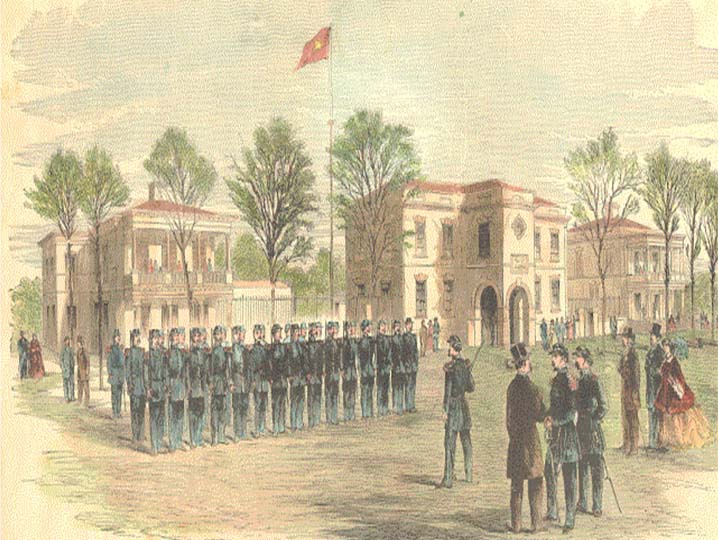
Courtesy of Augusta State University
Even after the 1801 opening of the University of Georgia in Athens, ARC continued to offer college courses at the freshman and sophomore levels. The state legislature authorized ARC’s governing body, the Trustees of Richmond Academy, to rename the school Tubman College in 1854, but differences between the trustees and the city of Augusta regarding financing stopped the effort. ARC closed during the Civil War (1861-65) but reopened in 1868 under Colonel George W. Rains, who had built and operated the Confederate powder mill in Augusta during the war.
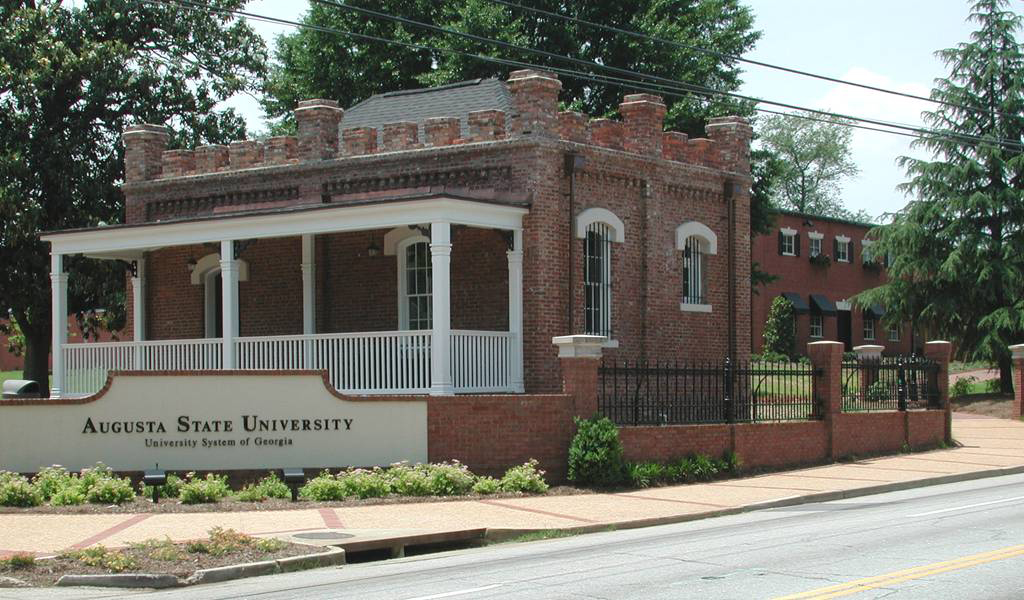
Courtesy of Augusta State University
After Rains retired in 1886, ARC suffered a decline in enrollment and cut its course offerings. In 1909, to bolster the academy’s sagging reputation, its trustees transferred the school’s operation to the Richmond County Board of Education, although the trustees retained supervisory rights. Lawton B. Evans, who headed the board, named Major George P. Butler principal and restructured the curriculum.
Junior College of Augusta
In 1924 Butler traveled to Columbia University in New York City to learn about the junior college movement, and Richmond County’s board of education subsequently established the Junior College of Augusta (JCA) on August 15, 1925. ARC and JCA agreed to share facilities under the condition that the college’s operation would in no way interfere with that of the academy, as insisted upon by ARC’s trustees. Women, who were barred from ARC, would be admitted to JCA, although primarily for a practical reason: a large new building for the college had been constructed and needed to be filled.
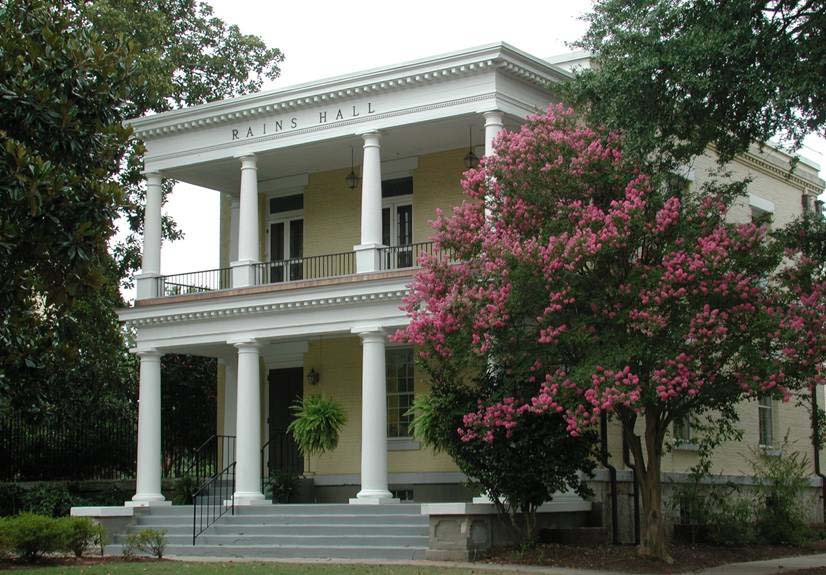
Courtesy of Augusta State University
In 1930 James Lister Skinner became the second president of JCA. During his appointment maximum salaries decreased as a result of the Great Depression. Additionally, JCA’s mission, enrollment, and curriculum remained static while ARC’s enrollment grew. Skinner postponed a forced departure of the college from the academy by securing a grant from the federal government’s Public Works Administration, one of U.S. president Franklin D. Roosevelt’s New Deal Agencies, to enlarge the premises.
In 1938 Eric Hardy succeeded Skinner as JCA’s president. Hardy, who valued job placement as much as senior-college placement, incorporated vocational training into the curriculum. In 1946 he initiated an evening school that catered to returning veterans of World War II (1941-45), and the University of Georgia began offering extension courses at JCA in 1947.
Hardy retired in 1954, and Anton Markert succeeded him. By that time increasing enrollment at ARC and at JCA threatened the accreditation of both institutions, and the Trustees of Richmond Academy demanded that JCA move to another location. The Richmond County Board of Education offered JCA to the Georgia Baptist Convention, but the organization declined the offer.
When the U.S. Army vacated the Augusta Arsenal in 1955, the site became available for JCA. After prolonged negotiations, the U.S. General Services Administration formally transferred the property to the board of education on February 12, 1957. The board rehired Eric Hardy to help with JCA’s move to the historic site, where several warehouses, used to house German prisoners during World War II, were located and where the antebellum plantation house Bellevue still stands. Although Markert selected the faculty who would move to the new campus, he decided to remain at ARC. The board named Gerald Burns Robins as JCA’s fifth president on July 11, 1957.
Augusta College
Georgia senator and Augusta native Carl Sanders took the lead in enacting the 1958 law that permitted junior colleges to enter the University System of Georgia under the Board of Regents. The regents assumed control of JCA from the Richmond County Board of Education on September 1, 1958, and changed the school’s name to Augusta College. In 1963 the regents authorized the college’s addition of junior- and senior-level courses and the awarding of baccalaureate degrees. A fine arts complex, including a performing arts theater, was added in 1968.
Despite these achievements, the school suffered embarrassment during Robin’s administration when he hired faculty—including a dean—who had falsely claimed to hold doctoral degrees. The college also struggled to shed the “high school” reputation it had acquired during its long association with ARC.
Following Robins’s resignation in 1970, the Board of Regents named George A. Christenberry as president. Under Christenberry’s leadership the college experienced more growth in both enrollment and faculty than ever before; added master’s degrees in business administration, education, and psychology; and reorganized into three schools: Arts and Sciences, Education, and Business. The college also acquired the last five acres of the original arsenal property, which had been occupied until 1977 by the U.S. Army Reserve, and secured from the federal government an additional 240 acres in Augusta’s Forrest Hills neighborhood. In 1977 the college opened a new library building, which was partially subsidized by Robert Pamplin and his wife, Katherine Pamplin, a graduate of JCA.
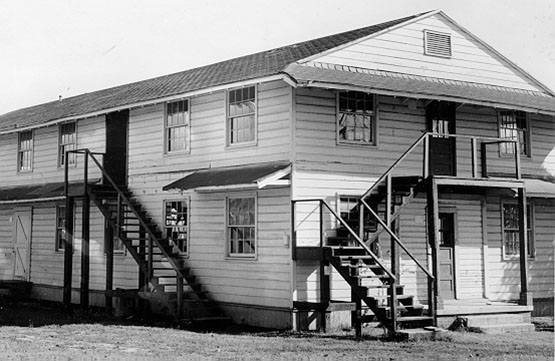
Courtesy of Augusta State University
Christenberry retired in 1986 and was succeeded by his academic vice president, Richard S. Wallace, after the interim presidency of F. William Monge. In 1989 student housing units opened the Forrest Hills campus, and the next year a physical education/athletic complex was completed on the same property. Following Wallace’s untimely death in 1991, Martha Farmer, the dean of the business school, acted as president until 1993, when William A. Bloodworth assumed the post.
In 1995 student enrollment reached a new high of 5,759, and the Georgia legislature approved funding for a new science building. The discovery of hazardous asbestos roofing material in the World War II warehouses, which had been converted into classrooms, led to a master plan for restructuring the campus. In addition to a science building, two other academic buildings were authorized, and the old warehouse buildings were slated for demolition. In 1997 an enlarged campus activities center was renamed Washington Hall in honor of the African American educators I. E. and Justine Washington.
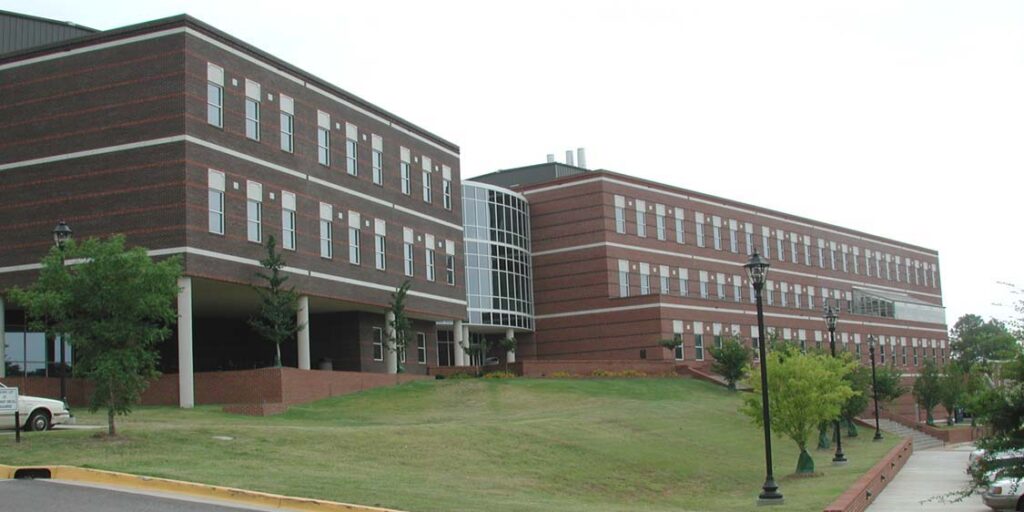
Courtesy of Augusta State University
Augusta State University
On June 12, 1996, the Board of Regents authorized a name change for senior colleges in the University System of Georgia, and Augusta College became Augusta State University. In that same year the Center for the Study of Georgia History was established, and Augusta State awarded its first honorary doctorate to Katherine Pamplin. The following February U.S. president Bill Clinton used Augusta State’s athletic complex to announce a new educational program modeled on Georgia’s HOPE scholarships.
On August 15, 2000, former governor Carl Sanders was the featured speaker at the dedication of the new science building. In October 2002 students and faculty moved into the first of two new classroom buildings, the $20 million Allgood Hall, named in honor of former regent and state senator Thomas F. Allgood Sr. In 2004 a third academic building, the $22 million University Hall, opened, as did a $1.5 million History Walk, which commemorates the histories of the college, the Augusta Arsenal, and the Summerville and Sandhills neighborhoods in which Augusta State University is located.
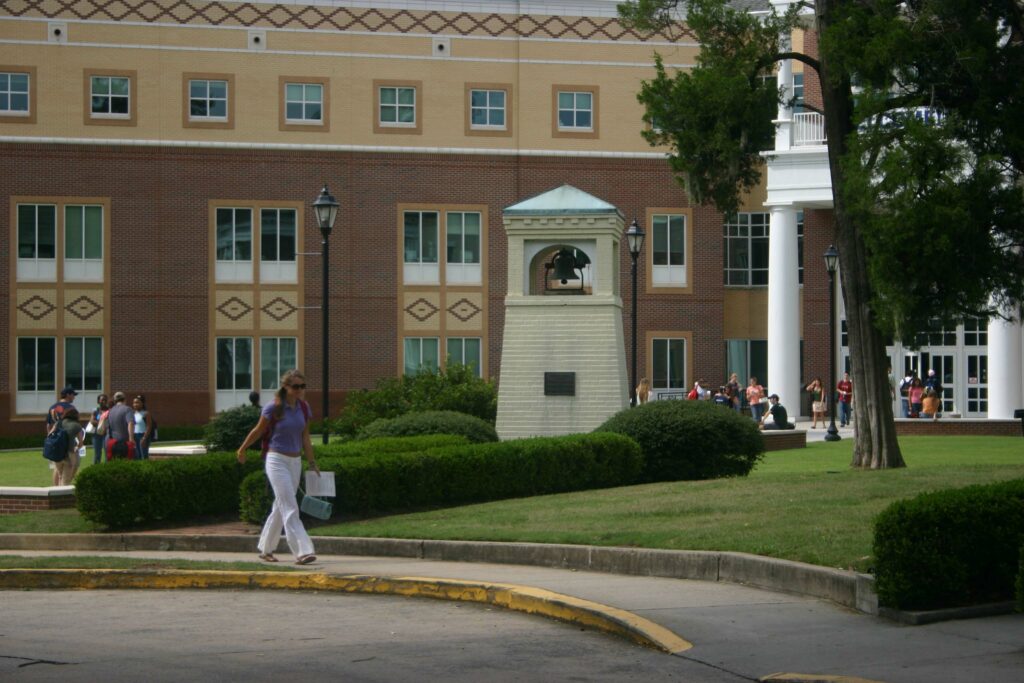
Courtesy of Augusta State University


